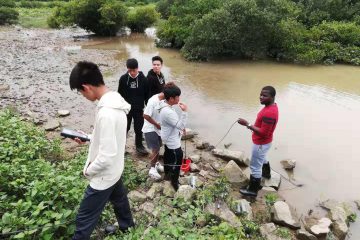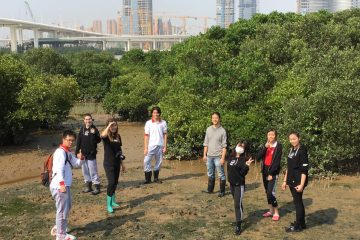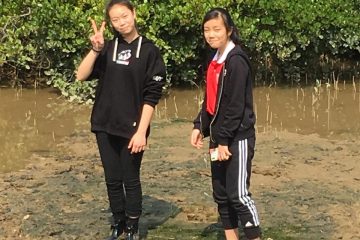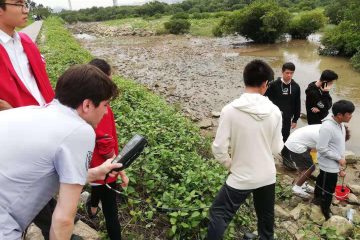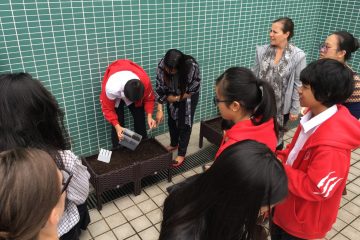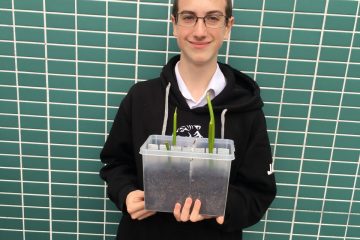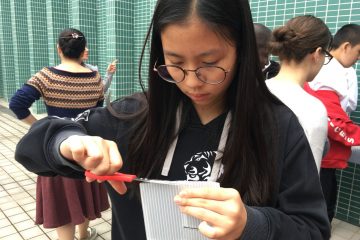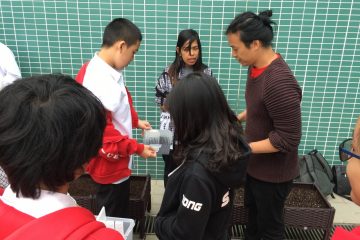By Dennis Stuebing
CAS, Experience Week & Service Coordinator
As you pass Broadway on the way to Coloane, you may notice a clump of trees, often covered in birds such as egretta garzetta (little egret), its big cousin ardea modesta (Eastern great egret), or even, during their migratory stopover in Macau, the endangered platalea minor (black-faced spoonbill). What you may not realise is that clump of trees is part of an important and complex system that sustains life, mitigates climate change, and protects Macau from storm surge during typhoons. During Experience Week 2019, approximately 40 TIS secondary students participated in a research project, under the leadership of Dr. Karen Tagulao from the University of Saint Joseph, to learn about mangroves and promote their protection.
The roots and the physical structure of mangrove trees provide mass tangled nurseries for fish, crustaceans, and molluscs. They also prevent shore erosion and create a buffer against storm surge during extreme weather events like typhoons. Research points to an expected increase in frequency and strength of storms due to climate change and Macau’s experience over the last two years demonstrates the need to mitigate climate change and better prepare for typhoons. Imagine if in the future, two typhoons the size and strength of Mangkhut or Hato blow our way in the same year. Is there anything TIS students can do to help reduce the impact?
In her research, Dr. Karen Tagulao has found that mangroves are able to remove pollutants like fertilizers and heavy metals traveling down the Pearl River to Macau. Mangroves also sequester carbon, meaning they are able to take carbon out of the environment and store it in soil, at higher rates than other trees. If all of that wasn’t enough to convince you that mangroves are important, the InterGovernmental Panel on Climate Change (2018) has found that compared to other systems, mangroves experience lower impacts and/or risks associated with increased temperatures, meaning they are even more important today as adaptive species to the progressively hotter world in which we live.
The importance of mangroves was not lost on the TIS Secondary Students who participated in the Middle School Local Alternative and Macao 2: Local CAS programs during Experience Week 2019. During the week of March 10th, our students joined Dr. Tagulao’s team as part of the “Bringing Science to Schools in Macao: from Genes to Ecosystems” project. They planted kandelia seeds in the new TIS mangrove nursery in the 5th floor outdoor space of the North Wing. Successfully germinated seedlings will be donated back to Dr. Tagulao’s project and planted along Macao’s shoreline.
The students also created videos, slideshows, animation, a pamphlet, and a song to promote the protection of mangroves in Macao. Some of the promotional products were presented to elementary classes during the week of March 25th, expanding the impact of Experience Week’s service learning across the school. Not only have TIS students gained new knowledge about the environment in which they live, but through experiential and service learning, they have contributed to our protection from the impacts of climate change.
TIS students volunteered to plant trees in the mangrove by Ocean Garden.
TIS students planted kandelia seedlings during Experience Week.
